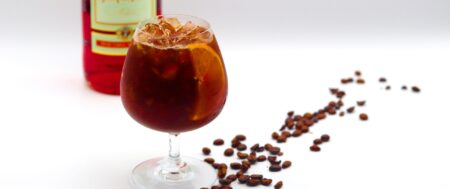When dealing with cocktail recipes, one might ask how good taste can be achieved. In this post, I will try to give an at least partial answer to this question and, as an example, explain how Salvatore Calabrese’s delicious Breakfast Martini satisfies the criterion derived before. I will also briefly touch upon further examples that illustrate the concept.
As is commonly known, the sensation that we usually call taste is produced both by our sense of taste and our sense of smell. There are five basic tastes that we can detect with our tastebuds: sweet, sour, bitter, salty and savory (umami). So it is safe to say that we “detect” most flavor components with our sense of smell. However, using the five basic tastes is great way to make your cocktails taste more interesting. The concept behind this is quite simple:
Try to include as many of the five basic tastes as possible.
Which basic tastes are important in cocktails?
Now there are definitely differences to the different tastes as to how commonly they appear in drinks. Let’s have a short look at each of them:
| Sweetness |
| Sweetness is a very important taste with regard to cocktails. Not only has it been the first flavor that people thought would be desireable to increase in alcoholic beverages a few hundred years ago, but it also occurs in most cocktails we know and love today. |
| Sourness |
| Sourness is only slightly less important in cocktails, compared to sweetness. Even though there are definitely more counterexamples (i. e. drinks where sourness does not contribute to the flavor), there are dozens and dozens of cocktail that make use of sour flavor. |
| Bitterness |
| Bitterness might seem even less common in drinks, but very often, it is used more as an undertone. As such, it can make up for the “je ne sais quoi” of a cocktail and transform an average drink into something truely awesome. Of course, there are also a few drinks that are “primarily bitter”, i. e. the bitterness is the most prominent part of their flavor profile |
| Saltiness |
| Now I would definitely agree that saltiness is less frequently seen in cocktails, compared to the other basic tastes mentioned before. However, if used, it can add that little something to a drink, similar to the function of bitterness explained before. |
| Savoriness (umami) |
| This is probably the least important basic taste with regard to cocktails. However, keeping it in mind might serve as a useful inspiration to some cocktail creators. Examples where this plays a role are rather rare and include variations of the Bloody Mary of drinks using spirits that have been fat-washed with savory ingredients. |

A prominent example: The Breakfast Martini
Now let’s apply this knowledge. The Breakfast Martini by Salvatore Calabrese is an excellent example of how one can deliberately include multiple of the basic tastes in a recipe. It contains orange marmalade as a sweetener. This is genius, as the marmalade also adds a distinct bitterness to the taste. Lemon juice is the sour ingredient in this recipe. There are no salty or savory notes to its flavor, but the balance of sweet, sour and bitter already makes it taste really great.
Pour all ingredients into a cocktail shaker and shake well for 10 - 20 seconds
Pour into a coupe glass and garnish with an orange zest
Ingredients
Directions
Pour all ingredients into a cocktail shaker and shake well for 10 - 20 seconds
Pour into a coupe glass and garnish with an orange zest

Enough talk. How does the Breakfast Martini taste?
The Breakfast Martini is a sour. The defining property of sours is their balance of sweet and sour, which definitely applies to the Breakfast Martini. With its lemon and orange flavor, the Breakfast Martini is clearly on the citrussy side of the spectrum. Due to my choice of gin, this becomes even more clear: Tanqueray Rangpur, which is lime-flavored. Consequently, it is also a very refreshing drink. Although it is quite full-flavored, it is not complex, but rather smooth. All in all, it’s a very enjoyable drink.

Another example
The principle I tried to describe in this article can be used when creating cocktails or when modifying existing recipes. At times, one might think that a drink is kind of good, but not that interesting. In that case, just try to make some basic taste more prominent!
Another recipe that demonstrates this perfectly is Jeffrey Morgenthaler’s version of the Grasshopper. The Grasshopper is a creamy-sweet dessert drink, but not complex at all. Really, out of the five basic tastes, the only one that applies to a “standard” Grasshopper is sweetness. The Morgenthaler version adds bitterness (by using Fernet Branca) and a hint of saltiness to make it more appealing.



